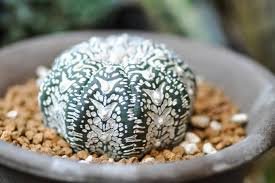
China’s traditional homes, especially those of noble families, have long been symbols of power, wealth, and cultural heritage. These homes are not merely buildings; they represent the ideals, values, and social status of the family that resides within them. Throughout the history of China, the homes of the noble families have played significant roles in showcasing the intricate relationships between social hierarchy, architectural design, and familial customs. From the elaborate design of palatial residences to the subtle elegance of rural aristocratic homes, Chinese noble families have created architectural masterpieces that continue to influence modern designs today.
In this article, we will explore the traditional homes of China’s noble families, examining their architectural features, the cultural and symbolic meanings embedded within these structures, and the ways in which they reflect the lifestyles and values of these families.
1. The Role of Architecture in Chinese Noble Families
Architecture in traditional Chinese culture was more than just a necessity for shelter—it was a representation of social status, familial values, and even moral codes. In the case of noble families, their homes served as symbols of prestige and power, showcasing the family’s ability to maintain its influence and wealth over generations. These homes were designed to fulfill various practical needs, but also to reflect the Confucian ideals of hierarchy, order, and harmony that were central to Chinese society.
For the noble families, architecture was also a medium through which they could communicate their family’s history, values, and traditions. The construction and decoration of these homes were often informed by principles derived from Feng Shui (風水), the ancient Chinese practice of arranging spaces to enhance the flow of energy, or qi (氣). The placement of rooms, the choice of colors, materials, and even the positioning of windows and doors were all carefully considered to align with cosmic forces and ensure prosperity for the family.
Furthermore, these homes were built not just for personal comfort, but as an extension of the family’s legacy. The layout of noble homes was often carefully planned with multiple generations in mind, ensuring that the house would function as both a private residence and a family shrine, where ancestor worship could take place.
2. The Layout and Design of Traditional Noble Homes
The design of traditional noble homes varied significantly based on the region, the era, and the family’s social position. However, there are several common themes that can be identified across the homes of noble families in China.
a) The Courtyard Layout: A Symbol of Harmony
One of the most distinctive features of traditional noble homes is the courtyard layout (四合院, sìhéyuàn), which consists of a central courtyard surrounded by rooms and buildings on all four sides. This layout is commonly found in the homes of noble families from the Ming and Qing Dynasties and represents the harmony between heaven, earth, and humanity. The central courtyard serves as a focal point for the home, offering space for daily activities, celebrations, and ancestral rituals.
In a typical sìhéyuàn, the main building would often be located in the center, with the rooms for parents and grandparents positioned at the northern side, and the rooms for younger generations and servants placed in the southern, eastern, and western wings. The symmetrical design of the layout symbolizes order, balance, and respect for the family hierarchy, which is central to Chinese Confucian values.
The family’s wealth and social standing could often be seen in the size and ornamentation of the courtyard. Larger homes would have expansive courtyards and additional buildings dedicated to specific family members, servants, or guests. The walls of the courtyard would be adorned with elaborate carvings, often depicting historical figures, auspicious symbols, or scenes from Chinese mythology.
b) The Role of the Gatehouse: A Threshold to Power
The gatehouse (门楼, ménlóu) of a noble family home held a significant place in traditional Chinese architecture. It served as the entrance to the family’s residence and was a symbol of both protection and authority. The gatehouse was designed to announce the family’s social standing, often featuring intricate carvings, decorative motifs, and large wooden doors.
In many cases, the gatehouse was the most heavily ornamented part of the entire home, featuring symbols that indicated the family’s noble status. The size and grandeur of the gatehouse could also reflect the family’s wealth. It was often the first point of contact between the noble family and visitors, setting the tone for the hierarchical relationship between the family and outsiders.
c) Ancestral Halls: Preserving Legacy
One of the most important features of the traditional noble family home is the ancestral hall (祠堂, cítáng). This is a space specifically dedicated to the worship of ancestors, and its significance cannot be overstated. In Confucianism, filial piety (孝, xiào) and respect for ancestors are core values, and the ancestral hall played a key role in the family’s connection to its past.
The ancestral hall was typically located in the most prestigious part of the home, often in the central building or at the highest point of the property. It was adorned with portraits or tablets of the family’s ancestors, and the space was used for rituals and offerings to honor them. During important holidays or family events, the entire family would gather in the ancestral hall to participate in ceremonies and pay respects to their forebears.
d) Decorative Elements: Expressing Cultural and Family Identity
Decorative elements in noble homes were deeply symbolic and carried great cultural significance. Wooden carvings, stone tablets, and ceramic tiles often featured traditional Chinese motifs such as dragons, phoenixes, and lotus flowers, which symbolized prosperity, harmony, and vitality. These symbols were not only decorative but served as expressions of the family’s values and ideals.
Moreover, the furnishings inside noble homes were also crafted to reflect status and sophistication. Richly decorated wooden furniture, intricate silk tapestries, and fine porcelain were commonly found throughout these homes. The design of each room, from the arrangement of furniture to the choice of decorative objects, was meant to convey the family’s wealth and cultural refinement.
e) The Influence of Feng Shui: Balancing Energies
As mentioned earlier, Feng Shui played a significant role in the design of noble homes. It is an ancient Chinese practice that seeks to harmonize the flow of energy, or qi, within a space in order to promote balance, health, and prosperity. The layout of the home, the placement of doors and windows, and the positioning of furniture all followed principles of Feng Shui to ensure that positive energy flowed through the household while negative energy was minimized.
For example, the main entrance of the home was usually located in a place that allowed for the easy flow of positive energy into the living spaces. Additionally, elements such as water features or plants might be strategically placed to enhance the flow of qi.
3. The Cultural Significance of Noble Family Homes
The homes of noble families in China were not merely private residences; they were symbols of the family’s role in society and their relationship with both the state and their ancestors. These homes reflected the hierarchical and patriarchal nature of Chinese society, where the male head of the household held considerable power and influence, both within the family and in the wider community.
The homes also served as centers of cultural preservation. They were spaces where traditional customs were passed down to future generations, and where the history of the family’s achievements and sacrifices were celebrated. The preservation of family heritage through architectural design, rituals, and artifacts ensured that the noble family’s legacy would continue for generations to come.
4. Changes in Noble Family Homes Over Time
While traditional noble homes were designed to reflect the values of ancient Chinese society, they have evolved over time in response to social, political, and technological changes. The fall of the imperial system in the early 20th century, the rise of modern urbanization, and the impact of Western architectural styles have all contributed to the transformation of noble family homes.
In modern times, many noble family homes have been repurposed or preserved as cultural landmarks or museums. Some families still maintain their traditional homes, although they are often adapted to meet modern needs. Despite these changes, the core values and principles that shaped the design of noble family homes continue to influence Chinese architecture today.
5. Conclusion: The Lasting Legacy of Noble Family Homes
The traditional homes of China’s noble families are more than just physical structures; they are symbols of the cultural, social, and familial values that have shaped Chinese society for thousands of years. These homes embody the wisdom of Confucianism, the importance of ancestor worship, and the significance of maintaining a connection with the past. Through careful design, decoration, and symbolism, these homes reflect the ideals of balance, harmony, and respect for both family and tradition.
As Chinese society continues to evolve, the homes of noble families remain a testament to the rich cultural heritage of the country. Whether in the form of historical monuments or modern adaptations, the legacy of these homes will continue to influence and inspire future generations of Chinese people.







